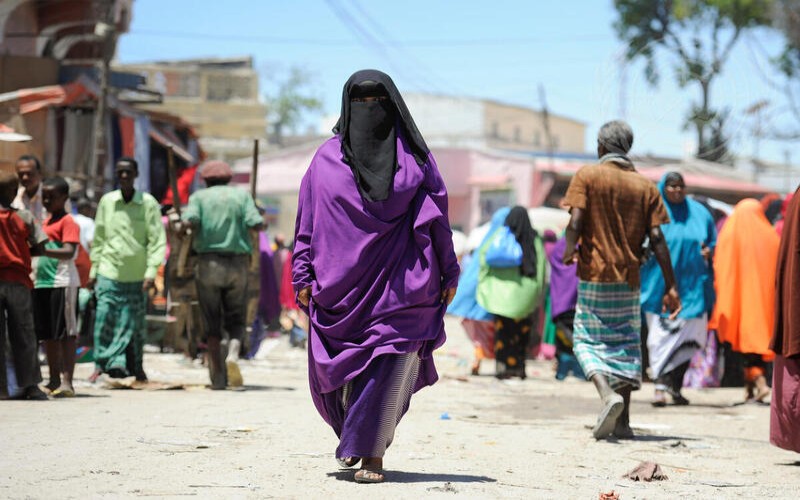Health ministry promotes NHIF-SHIF transition to enhance equity

CS Nakhumicha led a media engagement forum at which the transition was explained and its benefits highlighted.
The Ministry of Health has held a stakeholders' meeting with journalists to raise awareness and bring clarity to the national transition from the National Hospital Insurance Fund (NHIF) to the Social Health Insurance Fund (SHIF).
Under the new model, governed by the Social Health Authority (SHA), four major pillars guide the transformation: health financing, health commodities, integrated health information management, and human resources for health.
More To Read
- TSC confirms shift to SHA cover for teachers from December 1
- Court of Appeal postpones hearing on constitutionality of Health Acts
- Over 29,000 Kenyans die of cancer yearly as high costs force them to abandon treatment
- SHA faces Sh30 billion backlog despite Sh81 billion collected since inception
- Health Ministry tops list of NHIF debtors with Sh7.8 billion owed- RUPHA
- Duale explains shift from Linda Mama to maternal package under SHA
The change aims to provide a reliable package that addresses the needs of all Kenyans, ensuring equity at all levels, as part of the government's efforts to achieve universal health coverage.
The SHA will see the government analyse individual data to determine the ability to pay. It proposes contributions for both salaried individuals and those working in informal sectors, who will pay 2.75 per cent of their income.
The insurance will determine the amount to be paid by individuals in informal employment by assessing their annual income to ensure equity
Those in informal employment will make an annual advance lump-sum payment based on their assessed income
Under the SHA, individuals aged 25 and older are considered households and are required to pay for the SHIF, whether they are employed or not.
𝗚𝗼𝘃𝗲𝗿𝗻𝗺𝗲𝗻𝘁 𝗖𝗼𝗺𝗺𝗶𝘁𝗺𝗲𝗻𝘁 𝘁𝗼 𝗘𝗻𝗵𝗮𝗻𝗰𝗲𝗱 𝗛𝗲𝗮𝗹𝘁𝗵𝗰𝗮𝗿𝗲 𝗔𝗰𝗰𝗲𝘀𝘀 𝗮𝗻𝗱 𝗤𝘂𝗮𝗹𝗶𝘁𝘆
— Ministry of Health (@MOH_Kenya) June 17, 2024
Cabinet Secretary Nakhumicha S. Wafula has reiterated the government's commitment to improving healthcare accessibility and quality through the Social Health… pic.twitter.com/os3WBo2X4G
According to the Ministry of Health, those working in informal sectors account for 80 per cent of the population, with salaried workers making up about 20 per cent.
The SHA aims to introduce equity where lower-income individuals contribute less, and higher-income individuals contribute more to ensure equity in contribution based on the amount earned
For those unable to afford the premiums, the government will cover their costs and they are listed among the indigent group who have no source of income and are food-poor, accounting for about 17 per cent of the population
The SHA provides a wide range of services, including assistive devices, dental services, accident and emergency care, end-of-life and mortuary cover, special illness treatments, and mental wellness services. Annual check-ups and screenings for common diseases are also included, which were previously not included in NHIF
For example, the cost of a C-section under NHIF was Sh17,000, but under SHA, it will be Sh32,000, regardless of whether the procedure is performed in a public or private hospital.
All paid-up individuals are covered and are entitled to the amount as stipulated by SHA.
Transparency
Speaking at a Nairobi hotel during the forum with journalists on Monday, Acting Director-General for Health Patrick Amoth noted the importance of clarity on key issues surrounding the transition.
 Stakeholders at a meeting on the transition from NHIF to SHA at Aggyle Hotel, Nairobi on June 17, 2024. (Photos Ahmed Shafat)
Stakeholders at a meeting on the transition from NHIF to SHA at Aggyle Hotel, Nairobi on June 17, 2024. (Photos Ahmed Shafat)
"As we begin the transition, it's imperative that everybody is on the same page so that we all walk together knowing what's expected from us.”
Dr. Amoth highlighted the importance of transparency and public understanding.
"Nothing is hidden; we have shared explicitly what's covered in the SHA to ensure a seamless transition."
For screening services, the SHA adds an age cap to focus on the most appropriate populations, where particular ailments are concerns.
Justifying this, Amoth cited scientific evidence and said, "It doesn't make economic sense to screen a 20-year-old for a cancer that primarily affects older individuals.”
In her speech, Health Cabinet Secretary Susan Nakhumicha stressed that under the SHA model, funds will strictly be used for relevant services.
"We want to ensure that funds meant for health are used for health services," addressing past issues where health funds were diverted elsewhere.
The SHA will identify and regulate health service providers, ensuring transparency and accountability.
"We aim to assist people in staying healthy, providing treatment and rehabilitation services that are of high standards and available to all Kenyans as stipulated in our constitution," said Nakhumicha.
 Dr Timothy Olweny, Chairman of the Social Health Authority addressing journalists at Aggyle Hotel during a stake holders meeting on the transition from NHIF to SHA on June 17, 2024. (Photo: Ahmed Shafat)
Dr Timothy Olweny, Chairman of the Social Health Authority addressing journalists at Aggyle Hotel during a stake holders meeting on the transition from NHIF to SHA on June 17, 2024. (Photo: Ahmed Shafat)
The transition from NHIF to SHA involves transferring assets to cater for the needs of those owed by the NHIF.
"To the healthcare providers, we know we owe you and the assets will be transferred from NHIF to SHA to ensure the debts are paid," said Nakhumicha.
She further highlighted the importance of public participation in finalising the proposed tariffs, which will be gazetted once consultations are completed.
How to register
The SHA will implement biometric systems for household-level registration, ensuring accurate identification and access to services.
Kenyans can register for it using their smartphones, by dialling *147#, with the service taking just a day to activate, according to the Health minister.
One can also register at a Huduma Centre or the SHA offices, or with the help of community health providers.
In the new model, Kenyans will not need to have their cards 24/7 or remember their registration numbers, as the government will have their records.
They will only need their national identity cards to access services.
SHA Chairman Timothy Olweny noted the need to keep everyone healthy and ensure access to quality services for all.
"We need to help those who are healthy stay healthy and that those with chronic illnesses achieve better health,” he said.
Before you go, how about joining our vibrant TikTok and YouTube communities for exciting video stories?
Top Stories Today












































